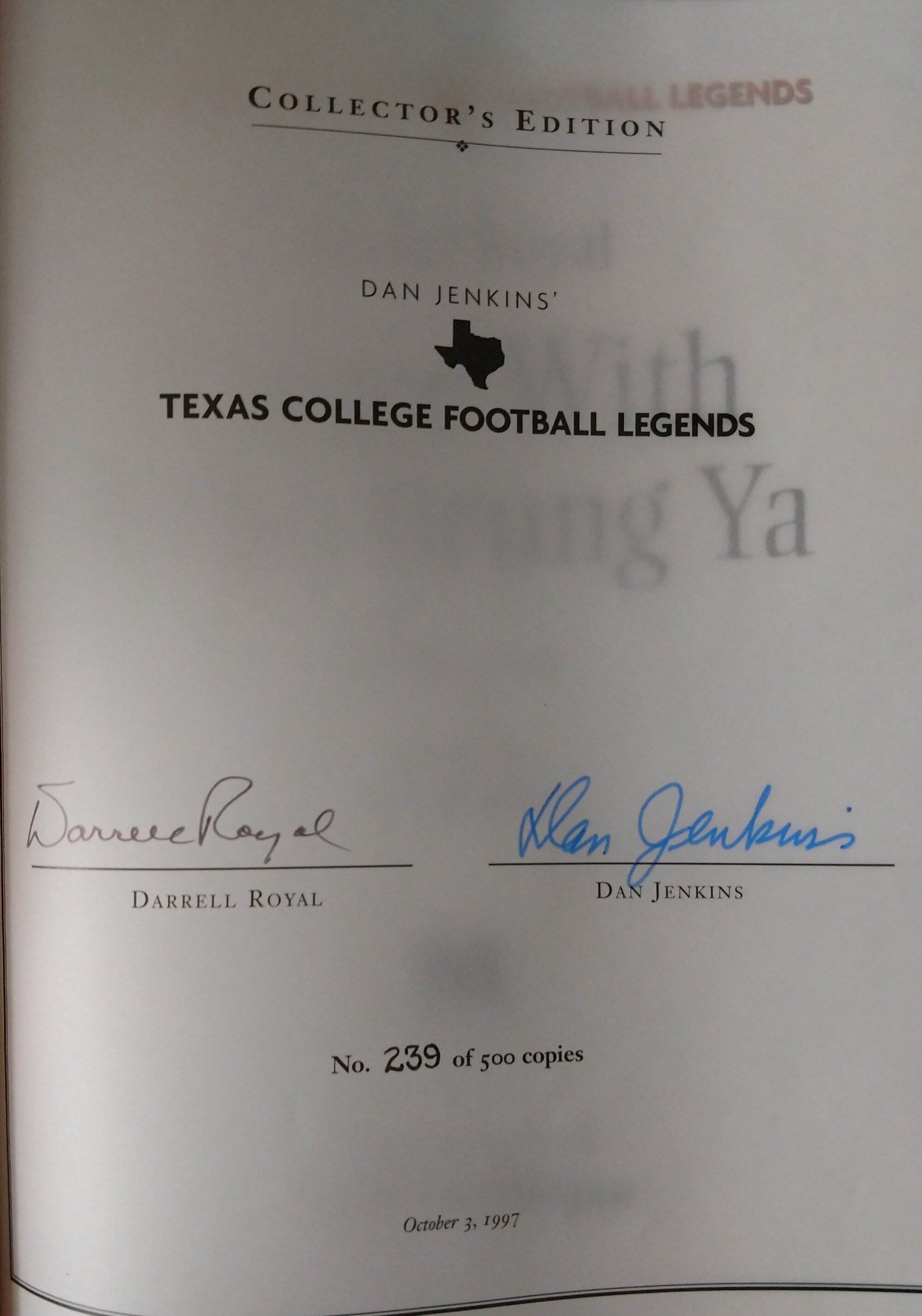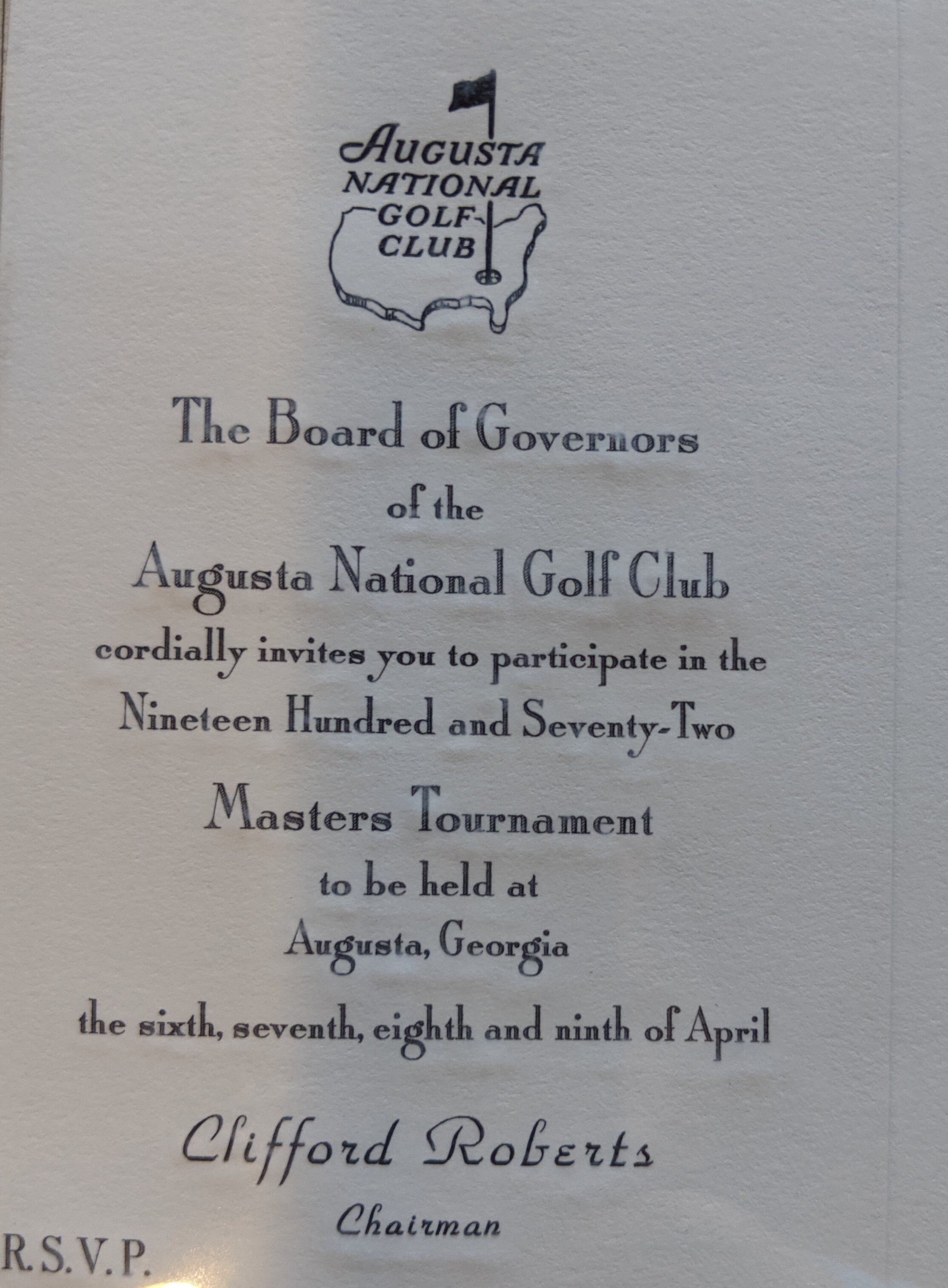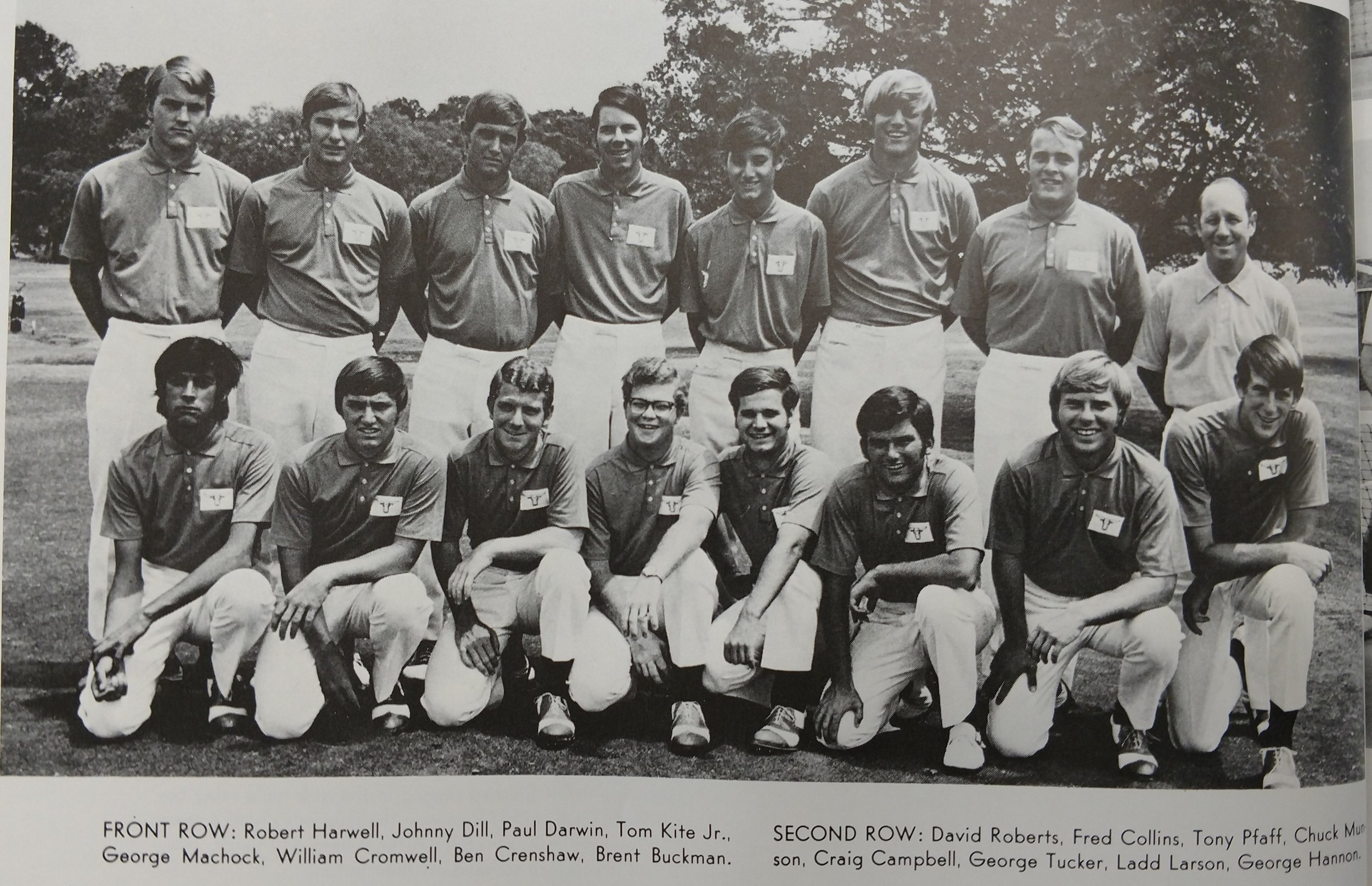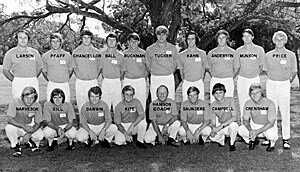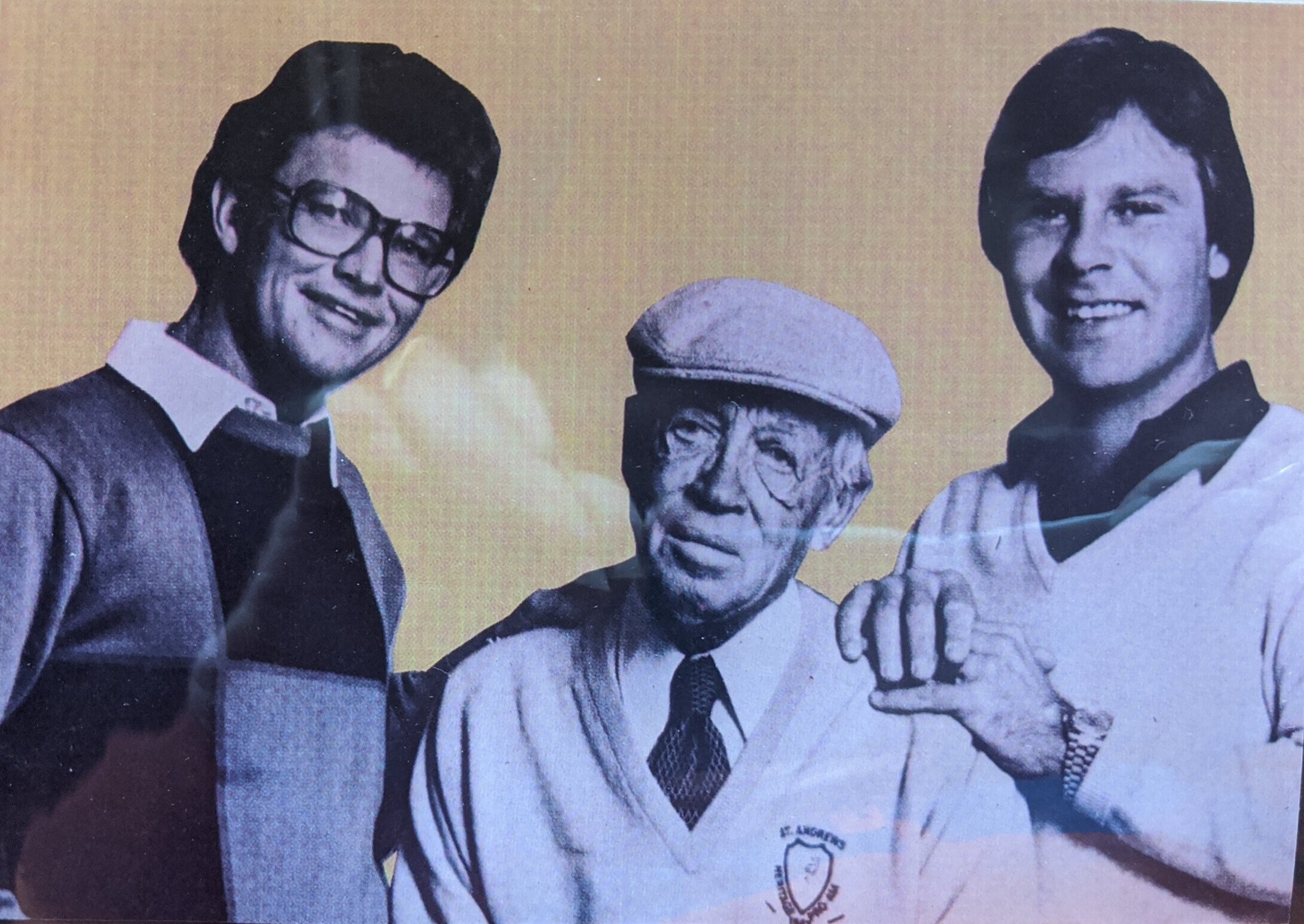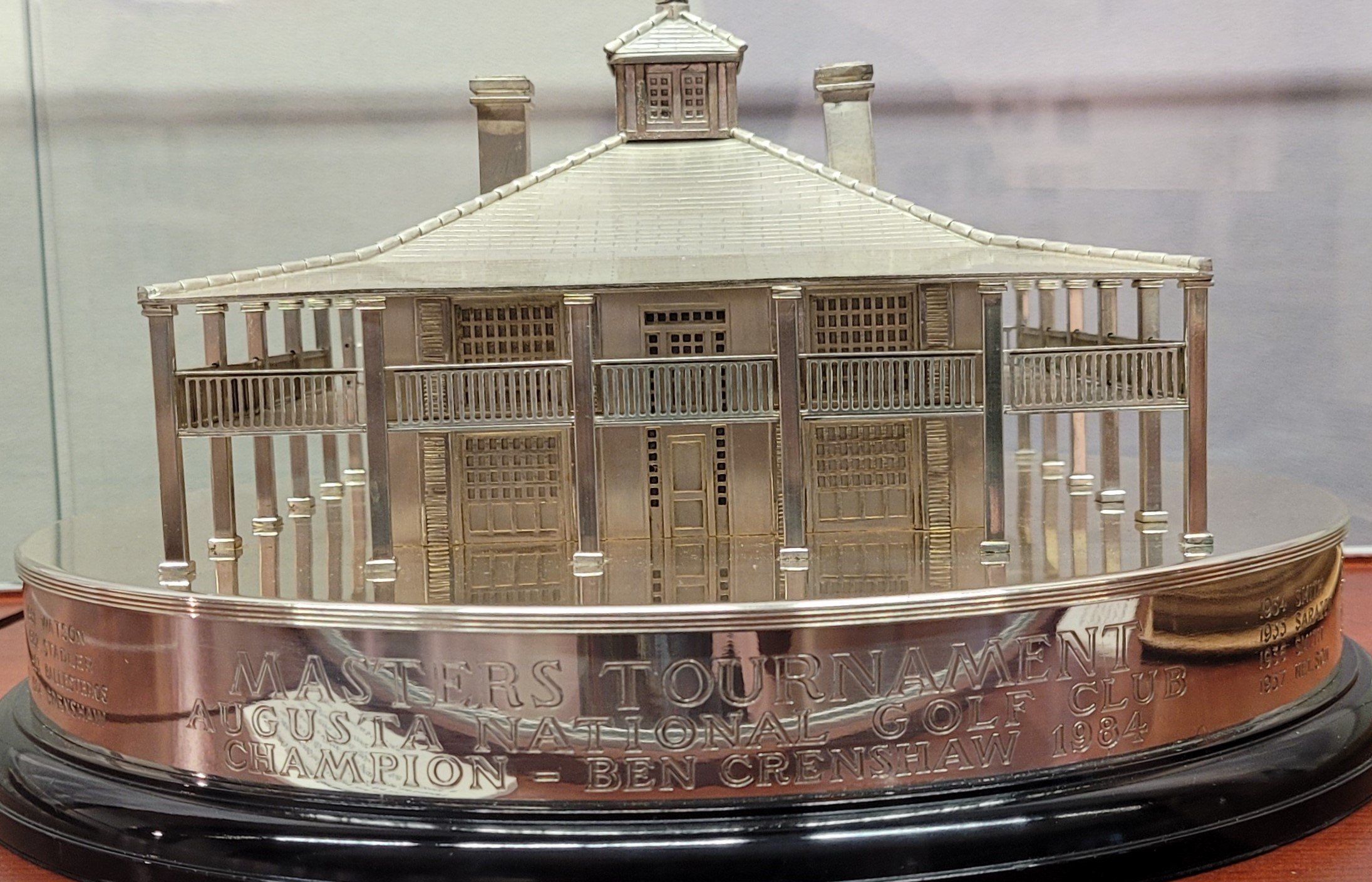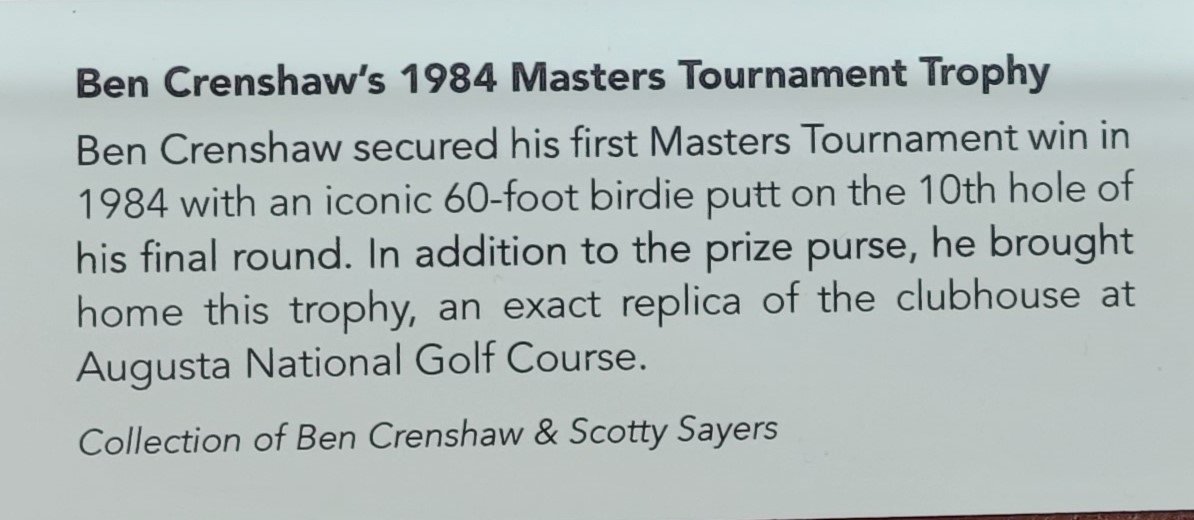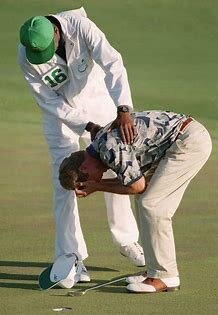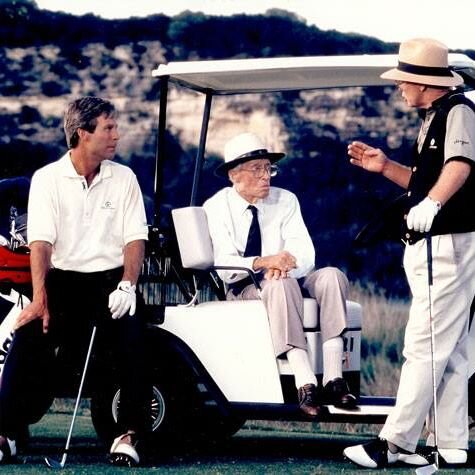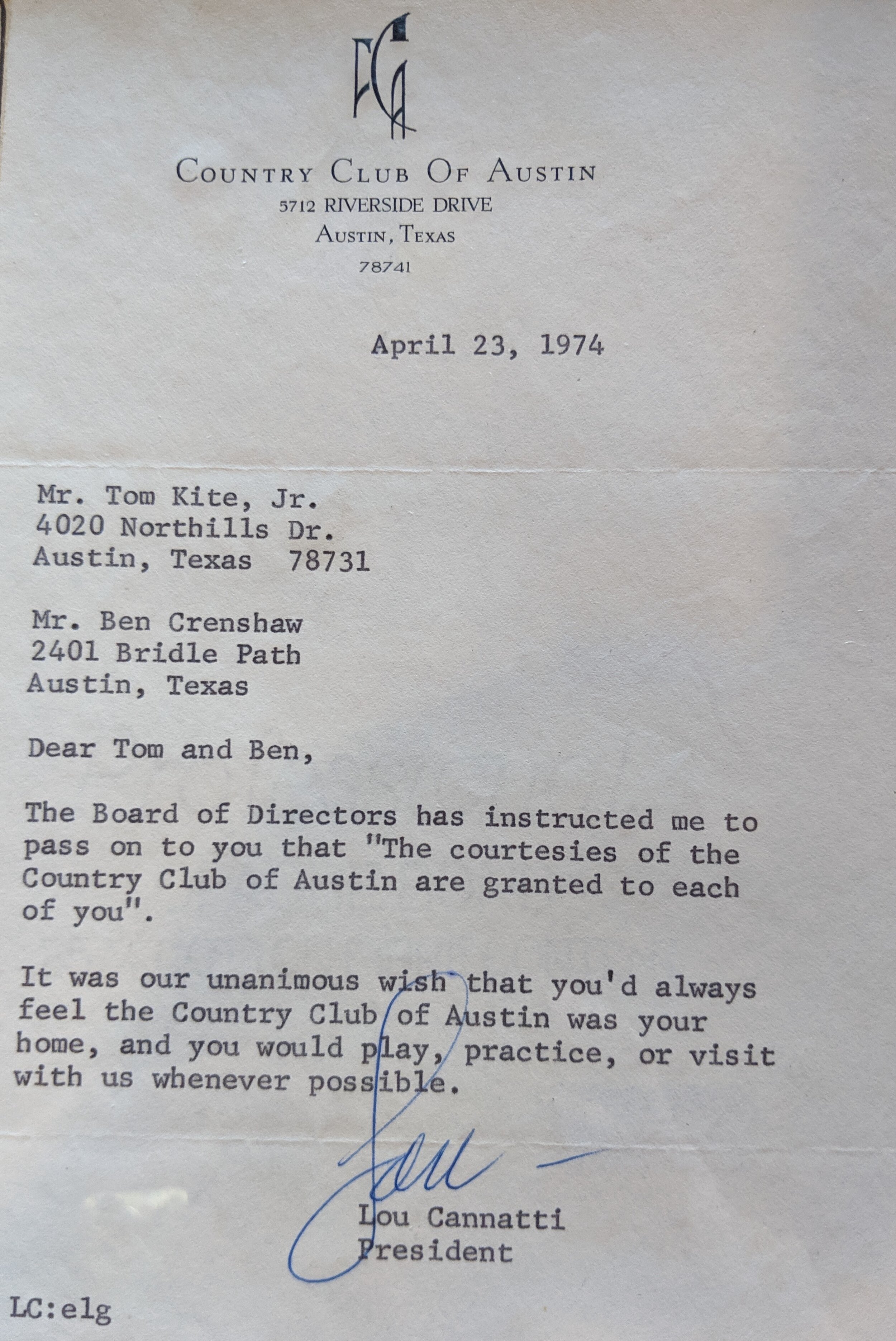Longhorn brand builder Ben Crenshaw shared his oral history through his Eyes of Texas.
Sponsored by
Sponsored by MBFC contact John Carsey at jcarsey@mbfc.com
Ben’s oral history is in the link listed below as “Ben Crenshaw”.
To know Ben Daniel Crenshaw starts with DKR's saying, "the real mark of a man is how he treats people who can do nothing for him."
Golf does not define Ben Crenshaw-never did. Ben Crenshaw is a winner, but not just because of the small numbers he wrote on scorecards or a impressive repeatable golf swing and a classic putting stroke. Ben is “the real mark” because he treats everyone he meets with respect.
Last year at the Stark Center, Sports Writer, Dan Jenkins was the guest of honor. All-time UT golf greats Ben Crenshaw and Tom Kite attended, along with many other Longhorns. After the event was over, I made my way to the podium to visit Ben. As I reached out to shake his hand, he smiled.
Ben's handshake was firm and committed, his eye contact penetrating and curious. He was genuinely interested in what I had to say. And his smile –- yes, the smile -- formed and permanently sculpted by decades of laughing is now the trademark of a man who in 2020 continues to smile and exhibit respect.
In the book "One Heartbeat," book written by Bill Little, DKR and Mack Brown remind the readers that victory results from the "team" heart beating as one. Ben agrees, choosing to merge his heartbeat with his "team"- family, friends, fans, and community.
Crenshaw was 10 years old when he took his first lesson at Austin Country Club from Harvey Penick, who was the head pro at the tender age of 19. The first time Penick put Crenshaw’s hands on a cut-down mashie, the teacher marveled at how natural his pupil’s grip.
Statute of Harvey is part of the Stark Center exhibits.
May 9, 1970, the stars aligned, and Ben Crenshaw signed with Texas. Golf Coach Hannon after seven years and a couple of close misses at winning the National Championship, knew he finally had the right ingredients to win it all. Unfortunately Collegiate golf in the early 1970’s did not have a large audience. Author Barry McDermott said, “ College Golf along with penmanship exercises and reading the Congressional Record has long ranked high in the boredom league. …. on par with intramural softball.” The author goes on to say that this is a pity because some college players, with a little adjustment to their mental games, were ready for the pros. Ben Crenshaw and Tom Kite’s names were mentioned. As amateurs, Tom Kite and Ben Crenshaw played collectively in 5 Opens and 3 Masters.
Under the guidance of Harvey Penick, Ben developed a putting stroke that was effortless, allowing him to master even the speediest of greens. In 1969 he was the ABC spotter in the U.S. Open played in Houston. His job sitting in the 15th hole tower was to whisper details to broadcaster Bud Palmer.
As a Longhorn Crenshaw was the first freshman to win medalist honors at the NCAA national championship tournament setting a record with a 15 under par for the tournament. He is First team All American and the most Outstanding Collegiate Golfer three years in a row- 1971, '72, and '73. During his Longhorn career Ben recorded a breath taking 70.61 stroke average winning 16 tournaments. While Ben won the NCAA’s golf interpretation of he Heisman trophy three years in a row, he would never have participated on a national championship team without a great supporting class.
And then there was Tom Kite who was more than a support cast golfer. He in many ways is Ben’s equal. Harvey had a special place in his heart for Tom Kite. In the book "Harvey Penick" by Kevin Robbins the author states that "Kite is a driven man with a colossal work ethic" but he had "a fraction of the athletic ability of someone like Crenshaw". "Golf never came easily to Kite, but he worked so hard at the game that he seemed to bend its will in his favor. Crenshaw won with ambivalent grace. Kite won with rabid commitment". Harvey Penick said that Tom had a " fire smoldering inside of him to succeed". Tom succeeded because of the countless hours he practiced his shots. Tom knew there was a difference between practice and hitting balls. He said "Practice requires concentration, while hitting balls does not."
But in the end the media chose Gentle Ben as the primary focus of their attention. Even though in 1971 it was Ben and Tom who led the charge that for the first time in the history of NCAA championship golf set a 4 day record of sub-par golf in the National championship tournament. The Longhorns were 15 down to Florida, Wake Forest, and Houston to on the last day of the NCAA tournament. Kite and Crenshaw were on fire, and Texas won the tournament by seven shots. The teams 275 was a NCAA Championship record.
Crenshaw is the individual National champion in 1971 and '73, and he shared the crown with Kite in 1972.
1973 Ben Crenshaw starts his professional career
In 1973, Crenshaw became the second player in Tour history to win the first event of his career winning the San Antonio Texas Open. He followed that win with five runner-up finishes in major championships, including a sudden death loss in the 1979 PGA Championship.
1984 Masters
By the time Crenshaw arrived at the 1984 Masters he was considered a talented tease. He was limping on a broken bone in his foot that went undiagnosed for years, its origins a karate kick of a metal trash can at Colonial. (When Austin sportswriter Dick Collins first used “Gentle Ben” in print, it was meant sarcastically.)
In 1984 Ben went on a birdie barrage to win the Masters. “It was such relief and joy,” Crenshaw says in Two Roads to Augusta, co-written with Carl Jackson and Melanie Hauser. When Crenshaw arrived back in Austin, at 1:30 in the morning, a stooped old man with a cane was waiting. “I’m mighty proud of you,” Penick said.
Non-PGA tournaments
Ben also played in golf tournaments that were not part of the PGA tour. In 1988 he was the medalist in the World Cup of Golf. He won the 1976 Irish Open and then finished runner-up to compatriot Hubert Green the next year. He also finished runner-up at the 1978 Australian Open and the 1982 Australian PGA Championship. And he famously had two runner-ups at The Open Championship, losing to Jack Nicklaus at the 1978 event and Seve Ballesteros the following year.
He was among the top ten on McCormack's World Golf Rankings from 1976 to 1981 inclusive, and returned to spend 80 weeks in the top-10 of the Official World Golf Ranking from 1987 to 1989. In 1987, he became one of the few players in history to finish in the top ten of all four major championships in the same season without winning any of them.
Harvey Penick and Ben Crenshaw win the 1995 Master’s.
Augusta National has long been the game’s grandest stage, and in 1995 the stage took on special overtones. The victory secured Crenshaw’s place in the Hall of Fame, but the victory transcends mere wins and losses.
In winning the Masters in 1995, "Gentle Ben" did not record a single three-putt during the tournament. Winning the Masters in 1995 was a special moment for Ben that will never be duplicated. It was a tournament that combined Bens heart, passion, loyalty, faith, inspiration, and talent with the power and unseen hand of his life time friend and coach Harvey Penick that lead to victory.
As Ben bent over on the 18th green after sinking the putt that won the Master’s , the world knew this was a victory driven by a inspirational bond between Harvey and Ben. The golf world shared this metaphysical moment vicariously. It was the defining moment in Ben’s life. It was the day that all who witnessed this event understood that Ben was more than just an everyday Tour player.
Ben said “Even now, people still want to talk to me about ’95. ” “It seems to have touched them in some way. When you’re in the middle of something like that, you’re not aware of the impact. That comes later.”
The 2015 Masters Tournament was the 44th and final for Crenshaw.
Mike Konderla shares a story,
This picture below was taken about two and a half weeks after Ben won the Masters. Hugh Lewis, Watson, and myself did a radio show on Cave at 1300 a.m. from 9:00 to 12:00 I really made a mistake leaving that show to go to kjfk. We had an 8.6 Arbitron rating Ron Rogers was the general manager of the station Bob Cole was the GM and did it show every morning with Sammy Allred no one has seen an 8.6 Arbitron rating on Saturday morning on an AM station from 9:00 to 12:00 so we all did the show that morning was the bin girl and Willie golf tournament at Barton Creek country club got to interview Ben Crenshaw two and a half weeks after he won the Masters Daryl Hall and Willie Nelson this is after the show after the tournament I was on a roll the guy on the left a bit Crystal is Dick night train Lane one of the hardest NFL history Earl Campbell's to my right about to say something, but I think Earl it says something to Ben and I played off at and I had been rolling laughing man it's a great moment man
Dick Night Train Lane, Ben Crenshaw, Mike Konderla and Earl Campbell is far right,
Crenshaw is inducted into the Texas Sports Hall of Fame in 1995.
The 1999 Ryder’s Cup
At the 1999 Ryder Cup, Captain Crenshaw willed the U.S. to an improbable victory. Bearing the criticism for the 10-6 deficit from the “professional viewing class” his strategy paid dividends on the last day of the Ryder’s Cup. Ben’s team regained the Cup.
Crenshaw is inducted into the Texas Sports Hall of Fame in 1995.



